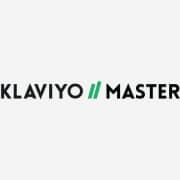Get Dynamic with Your Facebook Product Ads
Are you running an e-commerce website and need a way to retarget customers that are viewing your products? Dynamic products ads may sound complicated, big and scary, but the result can be incredibly beneficial to your business. Website traffic is great, and having customers shopping around on your site is even better. But how do you encourage prospects to make the transition from “just browsing” to “buy now”?
Facebook product catalogue
Dynamic Product Ads can target users who have viewed a specific product on your site or added it to their cart. We’ve found it be the most profitable campaign you can build.
It’s powerful because you’re targeting users who have considered purchasing before, so the reminder system of this ad allows them an opportunity to reconsider the purchase. Talk about a friendly reminder!
Creating a Facebook product catalogue is one of your first steps to creating Dynamic Product Ads. A Catalogue contains information for all products you’d like to advertise in your Facebook ads.
Facebook breakdowns
There’s a sophisticated breakdown Facebook proposes, where the audiences you’re targeting are split into segments. The breakdown depends on if the user has viewed the product, or added to cart. It then works on a break down of how recently they did so. For example, segments of users viewing or adding to cart within three days, then those within the seven days, excluding the first three, then fourteen, excluding the first seven, then twenty-one, excluding the first fourteen, and then the last thirty days, excluding the first fourteen etc. The trick is to assure you’re excluding the first segment from the second so you’re not driving your frequency up too high.
Add to cart and viewed products
The two most important breakdowns in relevance to e-commerce businesses are the ‘add to cart’ and ‘viewed products’ components. It’s always good to break down your segments in this way, as this means you can distribute your budget as a majority into the last three, seven or 14 days, and so forth.
Using this feature enables you to target those who have viewed your products, and not followed through with adding them to cart, or alternatively, have added them to the cart, but did not purchase. This means you can prioritise your budget in a way that uses ad spend correctly and targets the most recent viewers, as they are your top of mind customers.
Website traffic
An important factor to consider in this segmentation of users is the amount of website traffic you have. If you’re getting 500 unique visitors per month, within 2000 visitors, you may find it difficult to create a more sophisticated breakdown. It’s important to monitor the frequency of each breakdown to get the best return on investment in ad spends. This means you may have to expand your timing breakdown period to a larger time frame to get better results. For example, a thirty-day ad set rather than a three, five or fourteen-day ad set.
Want to get dynamic?
Dynamic product ads are a proven and profitable way to boost e-commerce sales. If you’re stuck on how to get started or need some questions answered, as always, leave them in the comments below or send me a private message.






